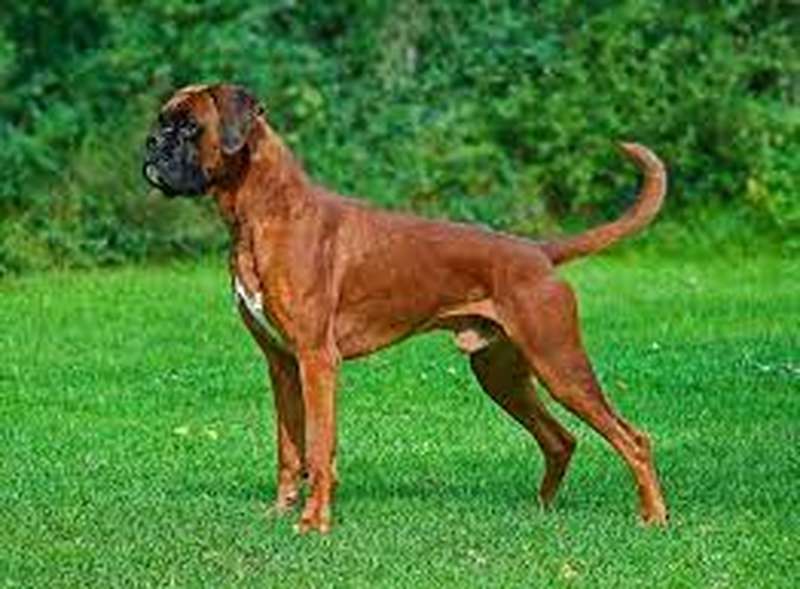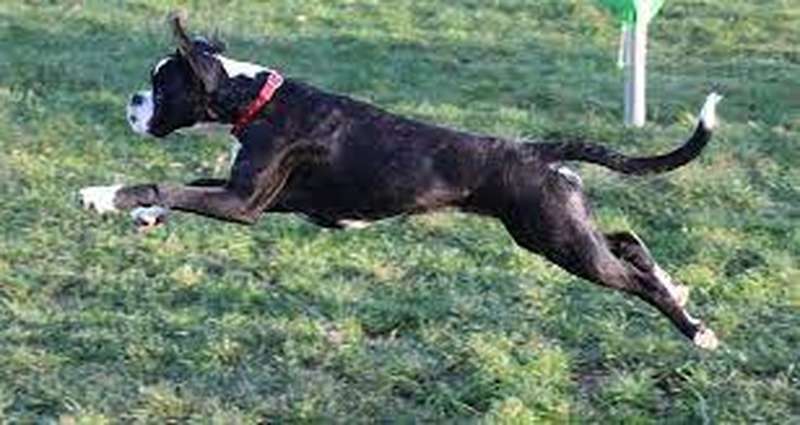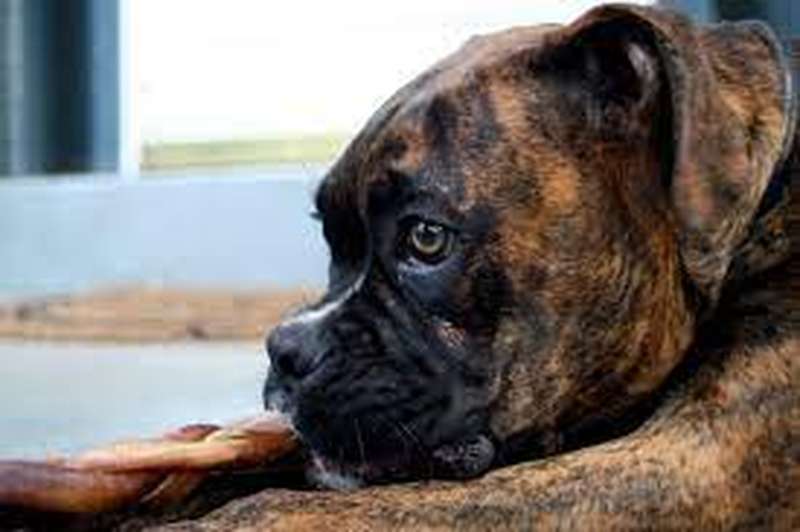One of the most popular dog breeds in the US, Germany, and the UK is the Boxer, a mastiff-type Molosser. Country, color, and mix determine the kind. They have comparable temperaments and ancestors. Read on to discover about boxer dog colors and types.
Types Of Boxer Breeds

The Boxer dog breed is a popular type of mastiff-like Molosser dog breed that originated in Germany. It is also widely recognized and appreciated in the United States and the United Kingdom. This dog is a crossbreed of a Bullenbeisser and a Bulldog. They currently rank 11th among the most popular dog breeds.
However, the Boxer breed has only one type but various lineages. Sometimes, these bloodlines can be mixed, but there are also instances where they remain entirely pure.
German boxers.
The German boxer, also known as the European boxer, is a medium to large-sized dog with a shorthaired coat.
On average, males have a height ranging from 22.4 to 24.8 inches, while females have a size ranging from 20.9 to 23.2 inches.
On average, males weigh 66 pounds, while females weigh 55 pounds. A German boxer puppy typically weighs between nine and 15 pounds at eight weeks of age.
They are considered fully grown when they reach 12 to 18 months. The average lifespan of it is nine to 12 years.
The boxer breed was the original, earliest, and allegedly the sole “official” dog. Among the three species, it is the largest and most robust.
Originally bred in the 19th century as guard and bull-baiting dogs, they were later used as butcher’s assistants to manage cattle in slaughterhouses.
Its ancestors include the English Bulldog, Mastiff, the now-extinct German bulldog known as the Bullenbeisser, and possibly the Great Dane and a terrier.
Its snout-to-head length ratio is 1:2, making it wider than the English boxer. The breed standard accepts the colors Fawn and Brindle.
American Boxer
Short-haired dogs in the medium to enormous size range are called American boxers. The average height of a male is between 22 and 25 inches, whereas the average height of a female is between 21 and 24 inches.
Women weigh 50 to 65 pounds, whereas men weigh between 60 and 80 pounds. There can be both tall and lean and short and stocky varieties.

At eight weeks old, an American boxer puppy weighs nine to fifteen pounds, and the dog is deemed fully grown between the ages of 12 and 18 months. It typically lives between nine and twelve years.
In 1904, the American boxer registered. The original American boxer had German base stock and additional German and Austrian imports to develop a distinct breed standard when the American Boxer Club was founded in 1935.
It has a snout-to-skull ratio of 1:3, is smaller and slimmer than the German boxer, and has a more prominent nose than the latter.
The breed standard accepts Fawn, Brindle, and Reverse Brindle as acceptable colors.
British boxer
A medium- to large-sized shorthaired dog, the English boxer is also known as the British or UK boxer. The average height of a male is 22.5 to 25 inches, whereas the average size of a female is 21 to 23 inches.
Females weigh between 55 and 60 pounds, while men weigh 66 and 70 pounds.
At eight weeks old, an English boxer puppy weighs nine to fifteen pounds, and the dog is deemed completely grown between the ages of 12 and 18 months. It typically lives between nine and twelve years.
The English boxer is the most diminutive and graceful of the breeds. Its legs are shorter and slimmer, and its body is lithe, elegant, and athletic.
Its snout is smaller than the German boxer’s, with a snout-to-skull ratio of 1:3.
Brindle Boxer
Along with fawn, brindle is regarded as one of the two original standard colors. Although purebred boxers cannot produce entirely black fur, it is a subtle color striping often made of very dark brown or black on a red basis.
The dog with a brindle coat may have a blue tint or be reddish-brown, comparable to Fawn.

Based on shade and coat color, brindle boxers can be categorized. The stripes could be either light or black.
The three types are tiger brindle, mahogany brindle, and reverse brindle. Some brindles—”flashy” brindles—even have white markings.
Fawn Boxer
Fawn is another original standard color alongside Brindle. Fawn is a reddish-brown color. Fawn-colored boxers with white markings on their chest and paws are called fawn and white boxers.
Brindle Reverse Boxer
The boxer’s color is advertised as rare. Although black is not considered one of the standard acceptable colors, it is still present in all three breeds.
Fighters typically have a color that appears black, but it is a very dark brown rather than a true black.
Also known as reverse brindle, it refers to a distinct coat pattern characterized by a deep, dark brindle pattern consisting of very dark brown or fawn brindle markings on a base color that is also very dark brown.
The coloring appears lighter and more pronounced against the base, unlike a typical brindle pattern.
White Boxer
White is not considered one of the standard acceptable colors for these breeds, but it can still be found in all three.
While some breeders may believe that white boxers are more prone to health issues and are of lesser quality than brindle and fawn boxers, it is essential to note that white is a recognized color within the purebred boxer breed.
There is a possibility that white boxers may be accepted by the American Kennel Club (AKC) in the future.
Boxador
People have created several boxer mixes, including some popular hybrids. The Boxador is a widely adored type of boxer mix that is quite popular.
The crossbreed inherits a large size from both parents and combines unique appearance and personality traits. As a result, this dog is known for being loyal, loving, active, friendly, silly, and eager to please its owners.
Additionally, it gets along well with children and other pets. Additionally, this breed is known for being easy to train, although it may be susceptible to experiencing separation anxiety.
The lifespan of a mixed-breed boxer is typically longer than that of a purebred boxer, averaging between 12 to 15 years.
Bloodlines
In 1904, the American Kennel Club granted official recognition to the breed.
Boxers are classified as members of the working group. Working dogs can perform various tasks, including guarding, police and military work, and hunting.
These dogs possess exceptional trainability due to their remarkable intelligence and aptitude for rapid learning. Additionally, they have incredible strength, attentiveness, and vigilance, making them highly proficient as guard dogs.
Boxers were not introduced to the United States until after World War I, even though they had been registered as a breed in 1904.
The popularity of Boxer dogs has now extended beyond America, reaching incredible levels.
Boxers are beloved all over the world. However, it is worth noting that different countries have their preferences regarding the appearance of Boxer dogs. As a result, three distinct types of Boxers have emerged.
- America Boxer Dog
- German Boxer Dog
- English Boxer Dog
This does not imply that there are various breeds of Boxers. Boxers have three bloodlines, but they all belong to the same breed.
These dogs share a common ancestry and have inherited similar genetic traits and temperament.
The three bloodlines were formed as a result of the distinct breed standards established by the major kennel clubs worldwide.
- America – American Kennel Club
- German – Federation Cynologique Internationale
- English – Kennel Club
Each kennel club only accepts Boxers bred according to their specific standards. As a result, the bloodlines were divided.
What is the average lifespan of boxers?
On average, boxers have a lifespan of approximately 10 to 12 years. Cancer is the primary cause of death in this breed.
Therefore, it is crucial to be vigilant for symptoms and seek treatment promptly to prevent its spread. Boxers are particularly prone to developing brain tumors, with approximately 40% of them being affected by this condition.
Owners of Boxers are recommended to maintain an active schedule for their dogs and provide them with a nutritious diet that includes proteins derived from real meat.
This will help ensure the best possible health for their puppies.
Appearance
While slight variations exist among different types of Boxers, they all have a similar overall appearance.
Boxers are characterized by their stocky and muscular bodies, which feature short backs and deep chests. Their athletic, square builds are indicative of their impressive power and strength.
Boxers have short, shiny coats that shed moderately over their muscular bodies.
These coats are limited to fawn or brindle colors only. The color of the fawn can range from a light tan to deep mahogany, resembling the color of a red Golden Retriever.
The brindle coat pattern can appear in two variations. The first variation is fawn, primarily with black stripes, while the second variation is known as a “reverse brindle,” where the fawn color is seen between black fur.
The term “Black Boxer” is commonly used to refer to a specific type of Boxer, but it’s important to note that no purebred Boxer is entirely black.
All boxers possess a distinctive black face mask. White markings can also be present on their bodies, as long as they do not exceed one-third of their body.
The ideal Boxer is medium-sized, with a weight range of 50 to 80 pounds and a height range of 21.5 to 25 inches. In general, females tend to be smaller than males. Other types of Boxers can vary slightly in size, but for the most part, they fall within this range.
They have square-shaped heads and undershot jaws. Brachycephalic breeds have short and blunt muzzles.
Conclusion
Boxers are remarkable dogs that excel as both pets and companions. All types of Boxers possess intelligence, strength, and a strong sense of family orientation.
The choice of a Boxer as a pet depends on the specific appearance and body structure that a potential owner finds most appealing.
Regardless of the type of Boxer you choose, you will undoubtedly appreciate your new pet’s unique personality and impressive stamina. What type of Boxer are you most interested in?